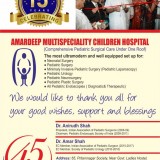A healthy diet is a balanced diet. You can improve your diet by looking at the food groups and make sure you’re getting the best of them. As well as avoiding the worst!
You could also tell whoever shops and cooks for you about the tips in this section. Or you could even print off the page for them so they have it to hand. They might thank you for helping them to get healthy too!
Milk and dairy products
Milk and dairy products are generally healthy foods, but they are high in saturated fat. Saturated fat is bad for your heart. So it’s best not to have too much of it. An answer to this is to look for reduced-fat or low-fat dairy products. These products still contain the same amount of protein, vitamins and minerals. They just contain less fat!
Healthy dairy tips
- Swap full-fat milk for semi-skimmed milk.
- Pick low-fat yoghurts.
- Look for reduced-fat cheese.
- Have just a scraping of butter or margarine on your bread.
- Use low fat natural yoghurt instead of cream.
Fruit and vegetables
It might be boring to hear… but you should eat at least five portions of fruit and vegetables every day. Fruit is important for the diet and a good source of vitamins, minerals and fiber. If you’re not keen on certain fruit and veg, try them again or mix them with other foods like yoghurt or cheese to help them go down!
Easy ways to get your five a day
- Have a glass of fruit juice or a fruit smoothie.
- Add dried fruit to your porridge and cereals.
- Eat one banana a day.
- Add fresh, tinned or dried fruit to yoghurt.
- Feast on crunchy carrot and celery sticks with dips.
- Make tomato salsa for fun and use as a dip.
Carbohydrates
Carbohydrates should be the main part of every meal. Wholegrain carbohydrates are higher in fiber. These are ones like wholemeal bread and pasta, brown rice, bran flakes, porridge and rye crispbread. Refined carbohydrates have had the high fiber bits removed by machinery. These include white rice, white bread, noodles, white pasta and sugary breakfast cereals.
Meat, fish and vegetable protein
Meat is good for you because it has nutrients including protein, iron, zinc and B vitamins. But beware! Although some lean meats are lower in fat, like chicken and turkey, others contain a lot of saturated fat. The healthiest way to eat meat is to have it lean and cut off all the fat and skin.
Experts say that we should have fish at least twice a week. One of these meals should contain oily fish like salmon, mackerel, sardines or fresh tuna. These contain omega 3 fatty acids, a very important part of a healthy diet. These help you to have a healthy heart!
If you don’t eat meat and fish then vegetable protein can give you of iron, zinc and the B vitamins along with extra fiber. To get enough of these nutrients eat 3 portions a day. Try to have a variety of beans, lentils, daal and peas. Vegetarian sources of omega 3s are: flaxseeds, walnuts and green leafy vegetables.
Tips for less fat in this food group
- Don’t eat the skin or fat on chicken or other meats.
- Try not to stuff yourself with sausages, salami, beef burgers and meat pies, these are high in fat as well as salt.
- Cook meat by baking, roasting or grilling.
- White meats are lower in fat than dark or red meats.
- Beans and other pulses are brilliant as they are low in fat and high in protein. Try them instead of meat in different dishes.
- Bake, grill or steam fish – it tastes better than if you fry it!
Fats
There are some fats, which are good for you. These are unsaturated fats. The other type of fat is saturated fat, which is bad for you.
Saturated fat
This is nearly always animal fat and is often solid at room temperature. It’s found in full-fat dairy products and things made with these ingredients like cakes, biscuits, chocolate and pies. It’s the white stuff you see on red meat. Eating a lot of this type of fat can cause heart disease.
Unsaturated fat
This usually comes from vegetables and nuts and can be polyunsaturated (like corn oil) or monounsaturated (like olive oil). This fat is liquid at room temperature and you can use margarines containing these fats instead of using butter.
Eating tips for teenagers
You’ve probably heard people saying it’s important to eat a good and balanced diet. It’s essential for helping you become a strong and healthy adult.
Five a day
We should all be eating at least five portions of fruit and vegetables a day as part of a healthy lifestyle.
Try and get into the routine of eating a fruit snack in the morning, plus a helping of veg or salad and a piece of fruit for both lunch and your evening meal.
You could even try tinned fruit, as long as it’s in juice and not syrup, or dried fruit like apricots, sultanas, raisins, apples and pears.
More healthy snacks
Try replacing snacks with a high sugar/fat/salt content with healthier options, like fruit, oatcakes and breadsticks. You don’t have to cut out bad snacks completely, just eat them occasionally instead of all the time. Get your sweet fix from fruits like banana or strawberries instead of chocolate and sweets.
Fewer fizzy drinks
Swap fizzy drinks / aerated drinks for lots of water. Or, try a glass of fruit juice as a substitute instead (but just one glass a day). Fruit juice counts towards your five a day, and will help satisfy your cravings for sweet things.
Variety of foods
The key to healthy eating is to consume a variety of foods from across the food groups. The perfect balance is to get plenty of starchy carbohydrates, fruit and vegetables, enough milk, dairy and protein foods, but to go easy on the fats and sugars.
One step at a time
Getting into healthy habits at an early age can have huge benefits right through your life. It can protect you against disease; keep you trim and stop you living off junk food when you leave home.
The rewards from a few simple changes to your diet can be massive. Take it one step at a time and try to have fun with it – you shouldn’t see healthy eating as a problem.




